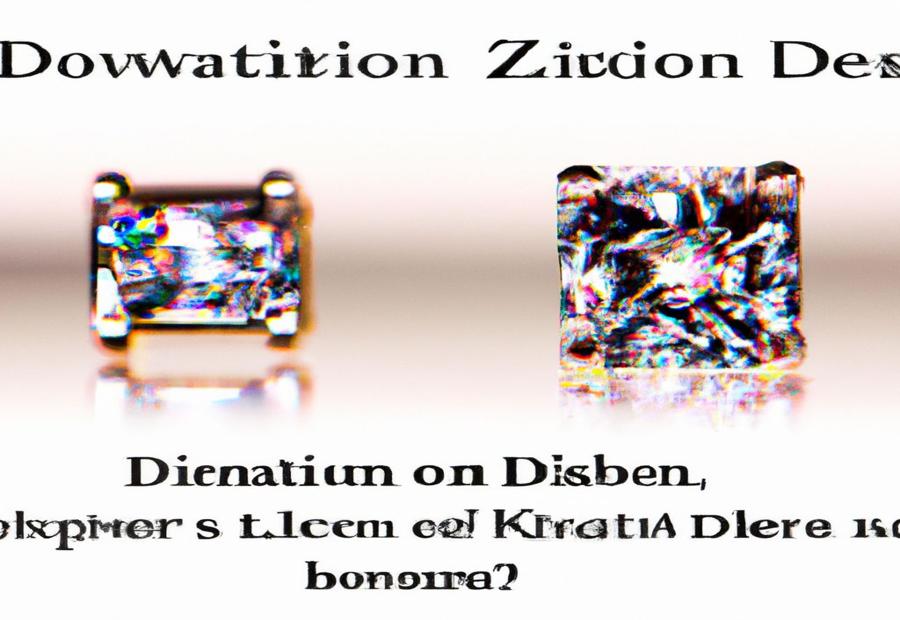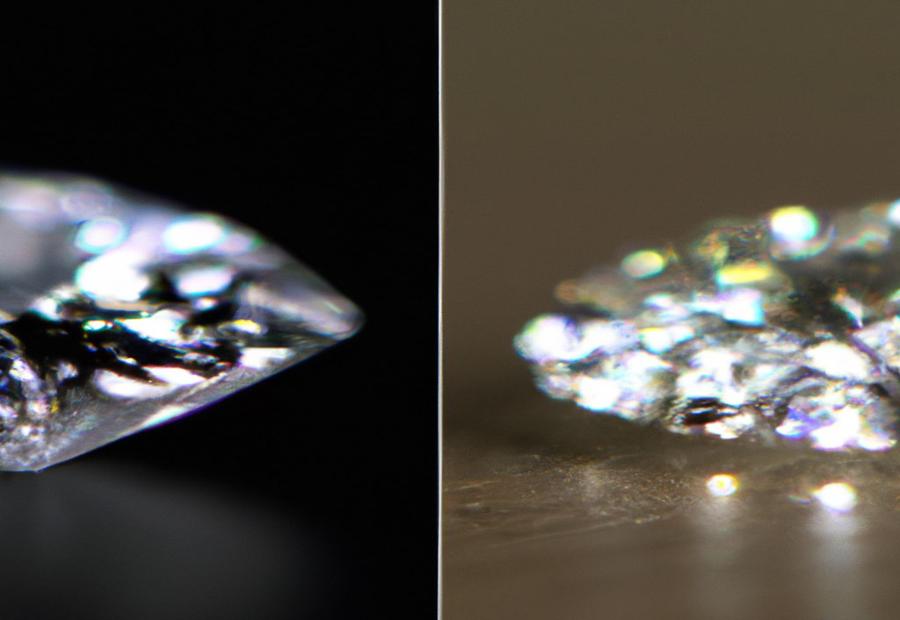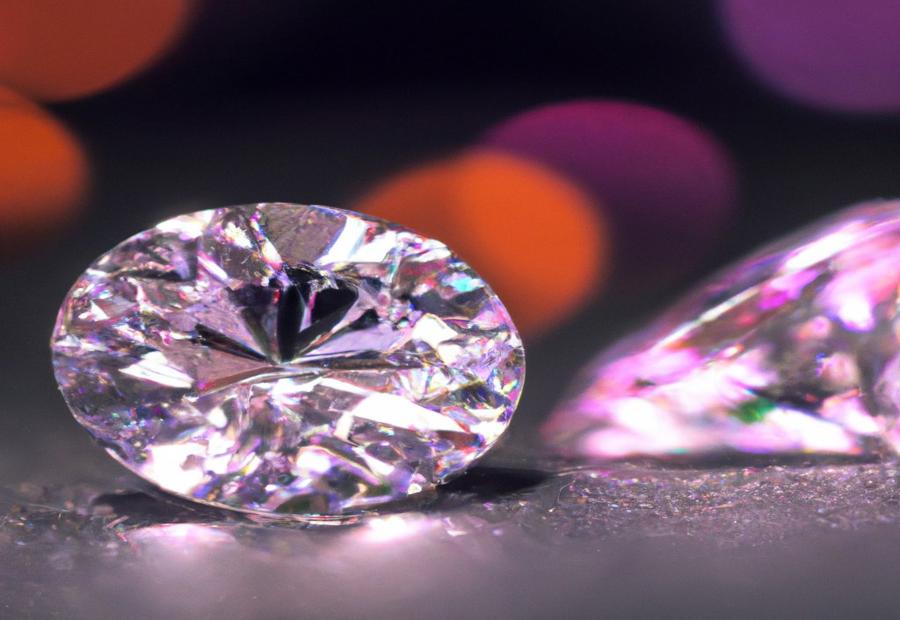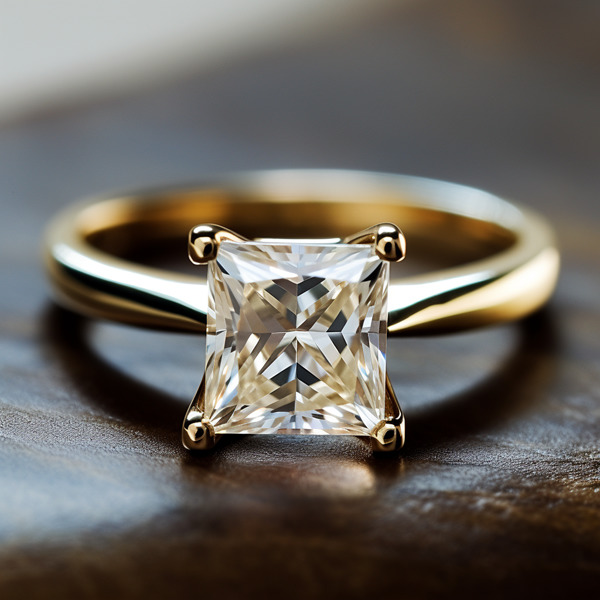What’s the difference between lab grown diamonds and cubic zirconia?
Key Takeaways:
- Lab-grown diamonds are created in a laboratory using technology, while cubic zirconia is a synthetic material made to resemble a diamond.
- The main difference between lab-grown diamonds and cubic zirconia is their composition and durability. Lab-grown diamonds are made of carbon and have similar physical and chemical properties to natural diamonds, while cubic zirconia is made of zirconium dioxide and is less durable.
- When choosing between lab-grown diamonds and cubic zirconia, factors to consider include budget, desired durability, and the ethical implications of diamond mining.

Photo Credits: Www.Lab-Grown-Diamond-Ring.Com by Alan Baker
Lab-grown diamonds and cubic zirconia are both alternatives to naturally occurring diamonds, but they differ significantly in terms of their composition and properties. In this article, we will explore the world of lab-grown diamonds and cubic zirconia, delving into their distinct characteristics and the reasons why they have become popular choices in the jewelry industry. From their origin to their appearance, we will uncover the unique aspects of each alternative, allowing you to make informed decisions when it comes to choosing between them.
Lab-Grown Diamonds
Lab-grown diamonds are made using advanced technology in a lab setting. They have the same physical and chemical characteristics as natural diamonds, including brilliance and fire. They are more sustainable and ethical than mined diamonds, and come in various sizes, shapes, colors, and qualities. Also, they are often more budget-friendly than natural diamonds.
Moreover, lab-grown diamonds differ from cubic zirconia. They are composed of carbon atoms in a crystal lattice structure, which gives them the same hardness and durability as natural diamonds. Additionally, using specialized gemological equipment, one can differentiate lab-grown diamonds from cubic zirconia due to their different optical properties.
So, when selecting between lab-grown diamonds and cubic zirconia for your jewelry piece, take into account your budget, desired look, and personal preferences. Lab-grown diamonds provide an eco-friendly option that closely resembles natural diamonds, while cubic zirconia offers an affordable option with its own sparkle. Ultimately, it’s up to you and your priorities when it comes to a diamond substitute.
For those looking for a more cost-effective imitation, cubic zirconia is the way to go!
Cubic Zirconia
Cubic Zirconia is made from zirconium dioxide. It has a brilliance and sparkle similar to natural diamonds. Though, it is not as durable. It is reasonably priced though, compared to lab-grown diamonds and natural diamonds.
It offers a visually appealing option at a lower cost. If you want an affordable diamond look-alike, Cubic Zirconia is the way to go. Just keep in mind that it may not last as long as lab-grown or natural diamonds.
To sum it up: Cubic Zirconia is an inexpensive gemstone. It looks like natural diamonds, but with less durability. It is a great option if you are searching for a cheaper alternative to lab-grown or natural diamonds.
Differences between Lab-Grown Diamonds and Cubic Zirconia

Photo Credits: Www.Lab-Grown-Diamond-Ring.Com by Joshua Carter
Lab-grown diamonds and cubic zirconia are two synthetic gemstones gaining popularity in the jewelry industry. But there are key differences between these stones.
Composition is one. Lab-grown diamonds are made in a lab with advanced technology replicating natural diamond formation. Carbon atoms form a crystal lattice structure, like natural diamonds. Whereas, cubic zirconia is a synthesized crystalline material with zirconium dioxide.
Hardness is another difference. Lab-grown diamonds are very hard, ranking 10 on the Mohs scale, one of the hardest substances on Earth. Cubic zirconia, however, is softer, ranking 8-8.5.
Optically, lab-grown diamonds have a higher refractive index than cubic zirconia. They are more brilliant and have a higher dispersion, known for fire and ability to split white light into its spectral colors.
Price is also different. Lab-grown diamonds tend to be more expensive, due to rarity and cost of production. Cubic zirconia offers a more affordable option, while lab-grown diamonds provide an ethical and sustainable alternative.
Similarities between Lab-Grown Diamonds and Cubic Zirconia
Lab-grown diamonds and cubic zirconia share some similarities. Both have a sparkling, vibrant look similar to natural diamonds. Plus, their hardness level is comparable, making them durable for everyday use. They’re both man-made, too!
| Similarities between Lab-Grown Diamonds and Cubic Zirconia |
|---|
| Appearance |
| Sparkling and vibrant, like natural diamonds |
| Composition |
| Both are man-made gemstones |
| Durability |
| Comparable hardness, great for everyday wear |
But, there are also differences. Lab-grown diamonds are made of pure carbon atoms. Cubic zirconia is a mix of zirconium dioxide and yttrium oxide. Plus, their optical properties are different. And, lab-grown diamonds usually have more value in the market.
Choosing between Lab-Grown Diamonds and Cubic Zirconia

Photo Credits: Www.Lab-Grown-Diamond-Ring.Com by Daniel Mitchell
Choosing between lab-grown diamonds and cubic zirconia requires considering a few key points. Lab-grown diamonds are created with technology whereas cubic zirconia is synthesized to look like diamonds. Lab-grown diamonds have the same properties as natural diamonds, but cubic zirconia is less durable and can get scratched. Lab-grown diamonds are usually more affordable than natural diamonds, and cubic zirconia is cheaper than both.
Lab-grown diamonds are ethical and sustainable because they are not mined, whereas cubic zirconia has no such advantages. Moreover, lab-grown diamonds hold their value better than cubic zirconia.
For those who prioritize ethical sourcing, durability, and long-term value, lab-grown diamonds may be the best choice. Those looking for a budget-friendly option may prefer cubic zirconia. The decision ultimately relies on personal preferences and priorities.
Suggestion: Customers who are unsure should first assess their budget. Then, consider their priorities, such as an environmentally friendly option or long-term value retention. Consulting a reputable jeweler or researching further can help to make an informed decision. Taking these steps can help individuals choose the best option for their needs.
Conclusion

Photo Credits: Www.Lab-Grown-Diamond-Ring.Com by Logan Hill
To sum up, lab grown diamonds and cubic zirconia contrast in their composition and characteristics. Lab grown diamonds share the same chemical makeup as real diamonds, and also possess similar properties. On the other hand, cubic zirconia is manufactured in a lab and has distinctive properties.
Moreover, lab grown diamonds are seen as a more sustainable and ethical option compared to natural diamonds. Meanwhile, cubic zirconia is a more affordable choice in the jewelry industry.
Some Facts About the Difference Between Lab Grown Diamonds and Cubic Zirconia:
- ✅ Lab-grown diamonds have the same structure and composition as natural diamonds, while cubic zirconia is made of zirconium dioxide and contains no carbon. (Source: Team Research)
- ✅ Lab-grown diamonds can be graded for color on a scale from D to Z, while cubic zirconia is colorless and displays colorful flashes of light. (Source: Team Research)
- ✅ Lab-grown diamonds can have inclusions, while cubic zirconia is usually internally flawless. (Source: Team Research)
- ✅ Lab-grown diamonds are harder and more durable than cubic zirconia, which is easier to scratch and break. (Source: Team Research)
- ✅ Lab-grown diamonds are more expensive than cubic zirconia but still cheaper than natural diamonds. (Source: Team Research)
FAQs about What’S The Difference Between Lab Grown Diamonds And Cubic Zirconia?
What’s the difference between lab-grown diamonds and cubic zirconia in terms of chemical compositions?
Lab-grown diamonds have an identical chemical composition to their natural diamond counterparts, consisting of pure carbon. On the other hand, cubic zirconia is a synthetic material made from zirconium oxide powder and does not contain any carbon.
How do lab-grown diamonds and cubic zirconia differ in terms of optical characteristics?
Lab-grown diamonds have a higher refractive index and dispersion compared to cubic zirconia, resulting in a greater level of brilliance and fire. Cubic zirconia, however, can exhibit a “rainbow effect” when compared side by side with diamonds.
What can you tell me about the quality grade of lab-grown diamonds and cubic zirconia?
Lab-grown diamonds are graded on the same scale as natural diamonds, ranging from Flawless to Included. Cubic zirconia, on the other hand, has a grading system from “AAAAA” for the highest quality to A/AB for the lowest quality.
How do lab-grown diamonds and cubic zirconia differ in terms of durability?
Lab-grown diamonds are harder and more durable, with a hardness level of 10 on the Mohs scale, making them resistant to scratches. Cubic zirconia, on the other hand, has a hardness level of 8 to 8.5 and may show scratches from everyday wear.
What is the main difference in pricing between lab-grown diamonds and cubic zirconia?
Lab-grown diamonds are more expensive than cubic zirconia but still considerably cheaper than natural diamonds. Lab-grown diamonds offer the benefit of getting a real diamond at a more affordable price compared to natural diamonds of similar quality and carat weight. Cubic zirconia, on the other hand, is cheap to produce and has little to no market value.
Are lab-grown diamonds and cubic zirconia a suitable alternative for natural diamonds in engagement rings?
Yes, both lab-grown diamonds and cubic zirconia are viable alternatives to natural diamonds for engagement rings. Lab-grown diamonds have a luxury aspect and are considered real diamonds, while cubic zirconia is a more affordable option commonly used for casual jewelry. The choice between the two depends on personal preferences and budget considerations.



Leave a Reply